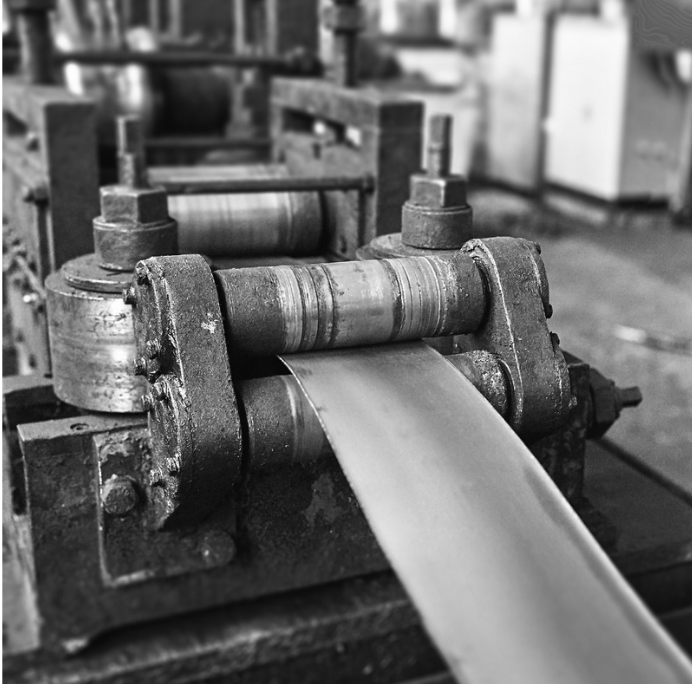The importance of optimal lubrication in rolling mills must be addressed. Proper lubrication is vital in enhancing the performance and longevity of these heavy-duty machines. Lubrication aims to mitigate wear and tear, reduce friction, and significantly lessen downtime, which can drastically cut into production schedules and increase maintenance costs.
Understanding the Role of a Rolling Mill
The rolling mill is a fundamental piece of equipment in a steel mill. Its primary function is to mold and shape metal by sending it through two rotating cylinders. This process alters the metal’s form and structure, producing a finished product. These mills are constructed to endure extraordinary heat and pressures, making them critical for creating a wide range of metal goods. Given the severe conditions in which they work, consistent maintenance of rolling mills is essential to maintain performance and extend the equipment’s service life.
The Importance of Proper Lubrication
Appropriate lubrication is integral to the efficient running of rolling mills. When you reduce the friction between moving parts, the wear and tear rate diminishes, helping to avoid equipment malfunctions. Adequate lubrication is also a means of heat dissipation, safeguarding the mill components from the damage caused by excessive heat during operations. Failing to maintain sufficient lubrication can quicken the rate of wear, which, in turn, can result in escalating maintenance expenses, shortening the lifespan of equipment, and extending downtime periods. With regular and correct lubrication, you can enhance the operational efficiency of your rolling mills, ensuring they run smoothly and last longer.
Choosing the Right Type of Lubrication
Determining the most suitable lubricant for your rolling mill is a critical decision that depends on several key factors. These include the design of the mill, the materials being processed, and the specific operational conditions. Generally, oil-based lubricants are chosen for their superior cooling and lubricating abilities. In certain situations, however, grease may be deemed more appropriate, especially in cases where the risk of leakage or contamination is high. It’s advisable to engage the expertise of a lubrication specialist to make the most informed choice. This professional can consider all variables to recommend the lubricant that best meets the requirements of your rolling mill.
How Often Should Lubrication Be Done?
What is the recommended frequency for routine maintenance checks on rolling mills concerning lubrication? The frequency of lubrication is not a one-size-fits-all matter. Still, it is dictated by various factors, such as the mill’s operational conditions and the guidelines set forth by the equipment manufacturer. Environments with elevated temperatures or high-speed operations typically necessitate more regular lubrication. It’s also crucial to regularly assess the lubricant’s state to pinpoint when replacement is required. Through this proactive approach, potential problems can be spotted in their early stages, helping to mitigate the likelihood of unplanned downtime. A meticulous lubrication schedule not only aids in enhancing the operational efficiency of the rolling mills but also in ensuring their longevity.
Necessary Maintenance for Rolling Mills
Did you know that preventive maintenance can reduce downtime by 35-50%?
Keeping a rolling mill in top working condition involves more than just adequate lubrication. Other maintenance procedures are vital to ensure its optimal operation. Consistent inspections to check for signs of wear and tear can help detect issues early. Equally important is the timely replacement of parts that are worn out. Regular cleaning to remove accumulated debris and grime can help prevent potential malfunctions. Implementing advanced monitoring tools like vibration analysis, thermal imaging, and oil analysis can offer predictive insights into potential failures. These practices allow you to schedule preventive maintenance proactively, minimizing the risk of unplanned outages and increasing the lifespan of your equipment.
Implementing a Lubrication Program
Developing and executing a well-thought-out lubrication plan can enhance your rolling mill’s performance and longevity. This program’s key elements should include selecting appropriate lubricants, deciding on suitable lubrication frequencies, and continually monitoring the lubricant’s condition. Proper storage and handling procedures of the lubricants should also be a part of the program to prevent contamination and degradation. Investment in such a comprehensive program can significantly mitigate equipment downtime, elevate reliability, and curb maintenance costs. It serves as a preventive measure, allowing potential issues to be addressed before they escalate, ensuring your mill’s optimal function.
Contact us to discuss how IFM can help with your lubrication program improvements.
